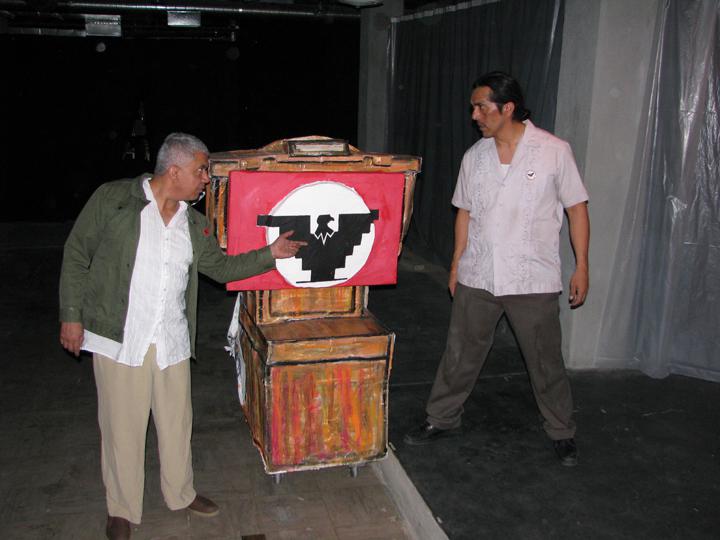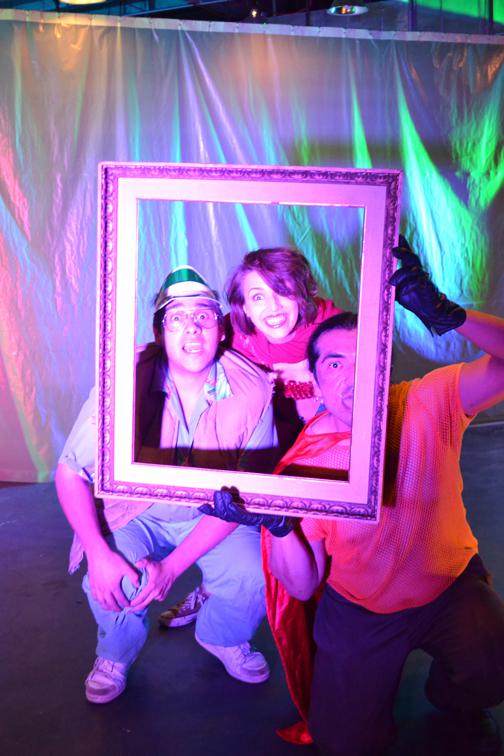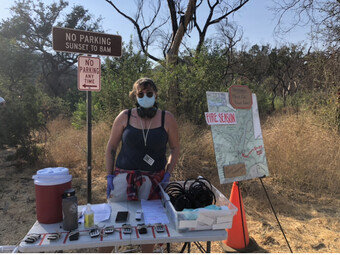Carlos Morton Resurrects Oscar Zeta Acosta in Brown Buffalo
I have a confession to make. I met playwright Carlos Morton a lifetime ago, when I was an undergrad at the University of Texas in Austin, “lost in a world of confusion,” to quote a line from the epic, proto-Chicano poem by Chicano political activist Corky Gonzalez titled “I am Joaquin,” a literary relic from the idealistic 1960s when Mexican Americans were rallying from Los Angeles to Houston to protest the disproportionate number of Mexican American casualties in Vietnam and socio-economic, political, and educational discrimination here at home. In 1969, the poem was adapted into a short film by famed playwright and director Luis Valdez, widely considered to be the father of modern Chicano theatre.
Morton was finishing up his doctorate in Austin, home of the Texas Longhorns, at the drama department there. It was the early 1980s, and he had come a long way from Chicago where his Mexican immigrant grandfather had settled, adopting as a surname a word he saw on a billboard advertising salt. I was still a teenager, and, a budding journalist who was the co-editor of a nationally distributed magazine. I was full of myself, riding high knowing that the stories I was writing were being read in thirty-nine states by subscribers to the periodical I produced in collaboration with a close friend.
Because both of us happened to be students on campus while Dr. Morton was writing the play which would earn him the eventual degree, we had the occasion to attend a production of La Malinche, Morton’s adaptation of Medea, the tragedy by Euripides. With the predictable insouciance that affects youth and makes them thumb their noses at anyone viewed as the “establishment,” I skewered Morton’s play in a review. My argument was based on a vehement need to oppose any allusions to Greek theatre within the context of Chicano theatre, a device I felt was demeaning to a viable, contemporary artistic expression born out of the Mexican American civil rights movement of the 1960s and 1970s.
I skewered Morton’s play in a review. My argument was based on a vehement need to oppose any allusions to Greek theatre within the context of Chicano theatre...
Fast forward to Los Angeles at the end of the first decade of the new millennium. Dr. Morton teaches in the drama department at UC Santa Barbara, two hours away. I have occasion to see him in Boyle Heights, a historic neighborhood often referred to as the gateway to the large swath of the city generally (and not always correctly) referred to as “East LA.” Dr. Morton is one of only a handful of academics who specialize in the relatively small body of work loosely gathered under the rubric of “Chicano Theatre.”
Dr. Morton is now a full professor and a widely published playwright. He is in Boyle Heights to support and applaud the work of writer Josefina López (Real Women Have Curves) and her local community-based theatre, Casa 0101. I remind Dr. Morton about our original encounter and apologize profusely. Ironically, La Malinche garnered first place in the Arizona Theatre Company's National Hispanic Playwriting Contest ten years after my immature and (in hindsight) irresponsible critique. Dr. Morton doesn’t even remember the review, so I’m off the hook. Whew! He even agrees to write an article for the small community arts paper I edit and publish on LA’s East Side, Brooklyn & Boyle.

Cut to February of this year when Morton’s heavy and psychedelic play, Brown Buffalo, is being staged as a workshop production by Company of Angels, a well-known local ensemble. The show is about attorney and writer Oscar Zeta Acosta, the firebrand Chicano agitator and author. Zeta Acosta ran with Hunter S. Thompson in the late 1960s and early 1970s when he wasn’t busy defending LA’s Chicano protestors, chasing skirts, running for Sheriff of Los Angeles County, ingesting any number of controlled substances, or consuming massive quantities of alcohol.
“I wanted to write an honest play,” says Dr. Carlos Morton. “I didn’t want to gloss over some of the darker aspects of his character.”
The play, staged in the basement of a downtown hotel built in 1905 (and since converted into loft apartments)—is based on the life and times of the self-proclaimed “Brown Buffalo,” who disappeared in 1974 while on a trip to Mazatlan, Mexico. Convoluted, raw and—at times—distressingly graphic in its depiction of a complex historical figure, the drama delves into the soul and psyche of the man who, until now, has been known primarily as the inspiration for the “300-pound Samoan” in Thompson’s novel, Fear and Loathing In Las Vegas.
In the Terry Gilliam film adaptation of the book, the Acosta character, played by Benicio del Toro, is known simply as “Dr. Gonzo” and exists as both foil and friend to protagonist Raoul Duke (Johnny Depp). In Morton’s Brown Buffalo, the focus is reversed. Thompson is revealed as a leech of sorts—a culture vulture who lives vicariously through Zeta Acosta. Thompson exploits Acosta’s adventures, profits financially from the stories, and amasses literary accolades for himself. Zeta Acosta, conversely, is justifiably dismayed that his friend could be so callous and unwilling to share credit for the gonzo school of journalism they invented together.
...the drama delves into the soul and psyche of the man who, until now, has been known primarily as the inspiration for the ‘300-pound Samoan’ in Thompson’s novel, Fear and Loathing In Las Vegas.
Actor Raúl Cardona put on thirty pounds to play the lead in a production directed by Guillermo Aviles-Rodriguez. Alejandro O. Nuno, brought in to pinch-hit for the role of “Hunter,” shaved the top part of his head to simulate the world-famous pate behind the aviator shades and visor brim favored by the late Thompson. These are not things that performers at small, community-based theatre companies would normally do for a workshop production. It seems to me that they were driven to do so by their regard for the play’s subject, and the need to append the historical record as it concerns Oscar Zeta Acosta, a notorious, yet still noble and heroic Mexican American leader who was beset by his own demons and presumed dead in 1974 after his mysterious disappearance.

It is also important to remember that in a climate where law enforcement is under scrutiny for blatant discrimination and the questionable use of deadly force, LA County Sheriffs comported themselves with similar impunity during the era when the Brown Buffalo made a stand. He fought for justice and defended the rights of working-class Mexican Americans. As a play, the story just may allow the wandering spirit of the real Oscar Zeta Acosta to rest in peace while it simultaneously signifies the undeniable maturation of Chicano theatre and solidifies Dr. Carlos Morton’s position as a leading voice in the field. For me, the play closes a circle even as it becomes a road map for a return to where I began, with my eyes on a blank page and my heart on an empty stage, a place where the stories of all who came before me will unfold.







Comments
The article is just the start of the conversation—we want to know what you think about this subject, too! HowlRound is a space for knowledge-sharing, and we welcome spirited, thoughtful, and on-topic dialogue. Find our full comments policy here
OZA's American story required rediscovery. So many Chicanos y Chicanas have been reliving bits and pieces of it for decades without knowing there once existed "One of God's own prototypes" whose life could have informed, or at least soothed in commiseration, their own struggles.